
Maruti Alto 800 vs Hyundai Eon: Shootout Photos!
- Nov 14, 2012
- Views : 905675

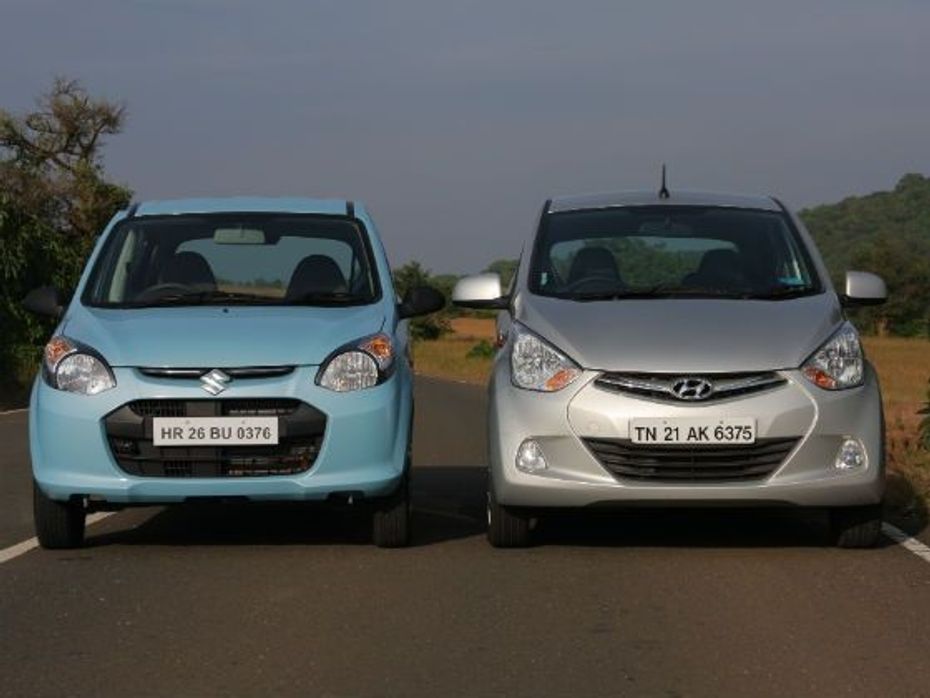
The Battleground
That the small car segment is the most booming segment here in India is perhaps one of the most clichéd statements ever made and that just goes on to say how dominant the small car really is in India. The humble 800 reigned supreme for an umpteen number of years and was succeeded by the Alto which carried the legacy further. Taking the fight to Maruti, Hyundai finally came out with the brilliant Eon. With a similar 3-cylinder formula under the hood albeit in much more modern trim, the Eon was more than just a formidable rival to the Alto. If not beaten, the Eon definitely caused a scar on the Alto’s sales, something which had never happened before. This could only mean one thing, the competition was getting closer and it was time to up the game and up the game they did. The new car has a lot riding on it and with the venerable 800 from the very third year of Maruti Suzuki’s existence in the country still accounting for 2000 plus units per month to add to the over 20,000 plus units per month present-gen Alto, the onus was to make a super smooth transition so that the new generation Alto could not only hit the tarmac running but also keep the numbers rolling in. But will it be able to snatch its position as top dog from the Eon back again? Let’s find out.
Fluidic or Manga
Let’s start with the new boy here. Stylistically, the new Alto seems to extend the design language of its predecessor while differing in the detail treatment. The new styled valanced bonnet adorned with the petal-shaped headlamps with black accents to set off the main beam and the turn signal indicators characterises the front end along with the new two-part grille which incorporates the Suzuki ‘S’ logo and a chrome-plated flanking strip on either side. It is different yet retains that very Alto-esque appeal and this same thought pervades all across the rest of the car’s exterior.

The Eon on the other hand follows Hyundai’s very successful ‘Fluidic Design’ philosophy. The front grille and bumper feature a neat translation of the aggressive trapezoidal design lines that can now be found on every Hyundai. Flanking the grille on either side are the large swept back headlights that add the final touch to a well crafted front end. When viewed from the side, the Eon is reminiscent of its elder sibling, the i10. However the designers at Hyundai have taken the liberty to feature a rather robust shoulder that sweeps up towards the rear to give the little hatch a neat sporty touch. Other elements that are visually striking on the Eon are the slightly pronounced wheel arches and the integrated roof spoiler which do their bit to contribute to the overall style statement.
When parked side by side however, it’s the Eon that grabs the most attention, its handsome lines almost makes the Alto look toonish (which most Kei cars look). The Eon definitely has the styling mantle covered and in fact looks better than its siblings, the Santro and the i10 as well.
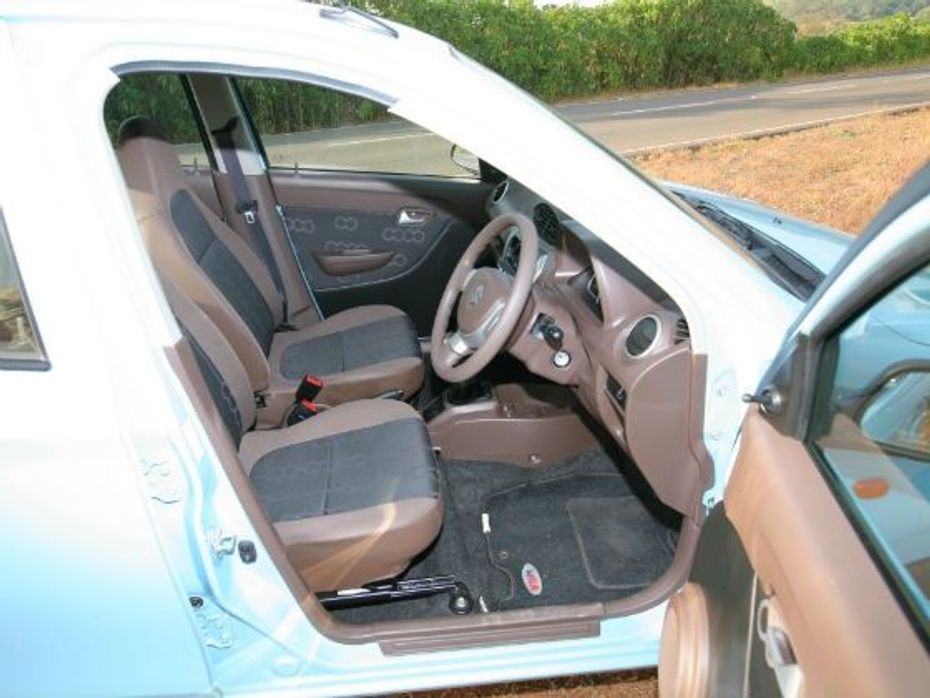
The Insides
While both these cars might be little entry level hatchbacks, every mm of space matters. For the buyer, these cars are not just city commutes but the only means of travel, be it the city, the highways or even expressways.
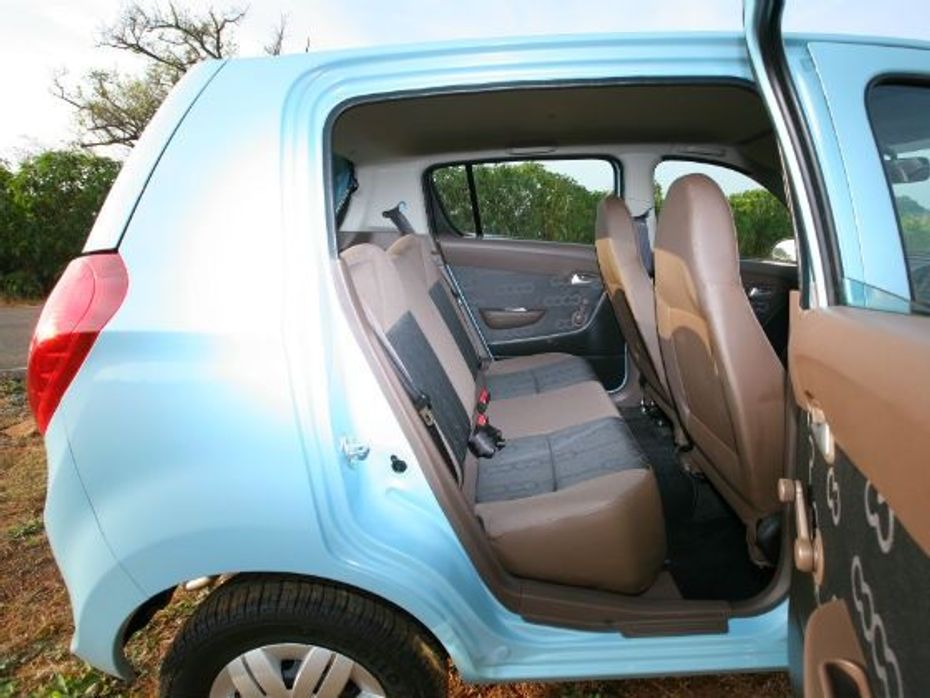
The new Alto has grown not just from the outside but from the inside as well. There is more room for all, the cabin is fresh and appealing with new accents, new plastics, with even the dashboard now moulded in a new shade of colour which is carried all round on the door pads. The simple expedient of large-sized cutaways below the front seats liberates ample foot space for the rear seat occupants and while the front seats seem beautifully sculpted, for my large frame I would have liked both a bigger and wider seat squab as also a better cushioned and profiled back rest with side supports to match.
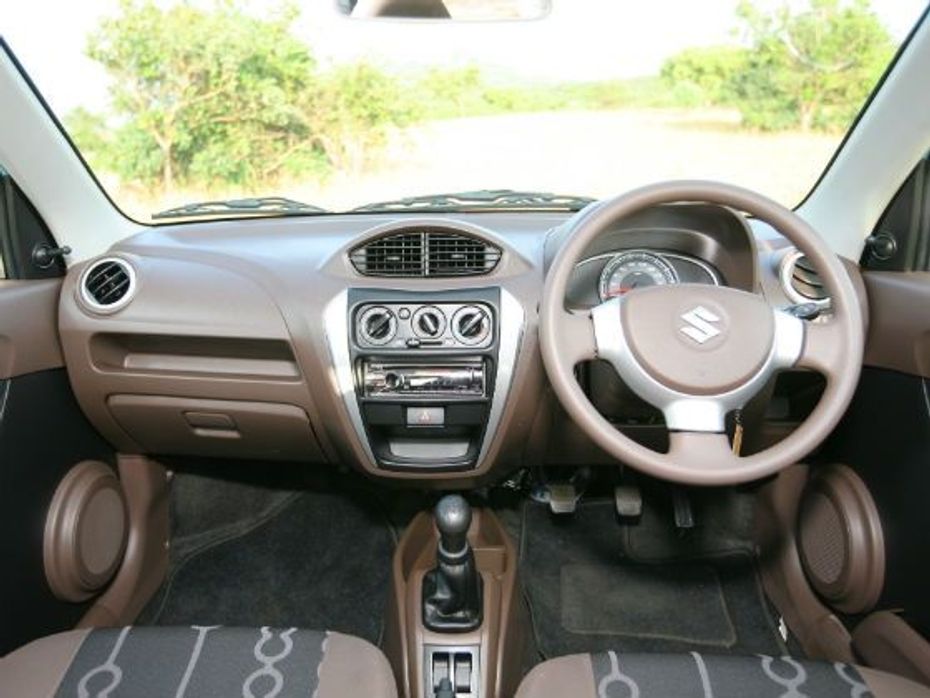
The dashboard sports an all new design too and looks eons ahead of its predecessor. The instrument binnacle is as simple as it can get with a large central speedometer flanked by a digital fuel gauge at the bottom and the usual tell-tale lights on the left. Coming to the space, the new Alto is packaged way better and as a result feels a lot more spacious.
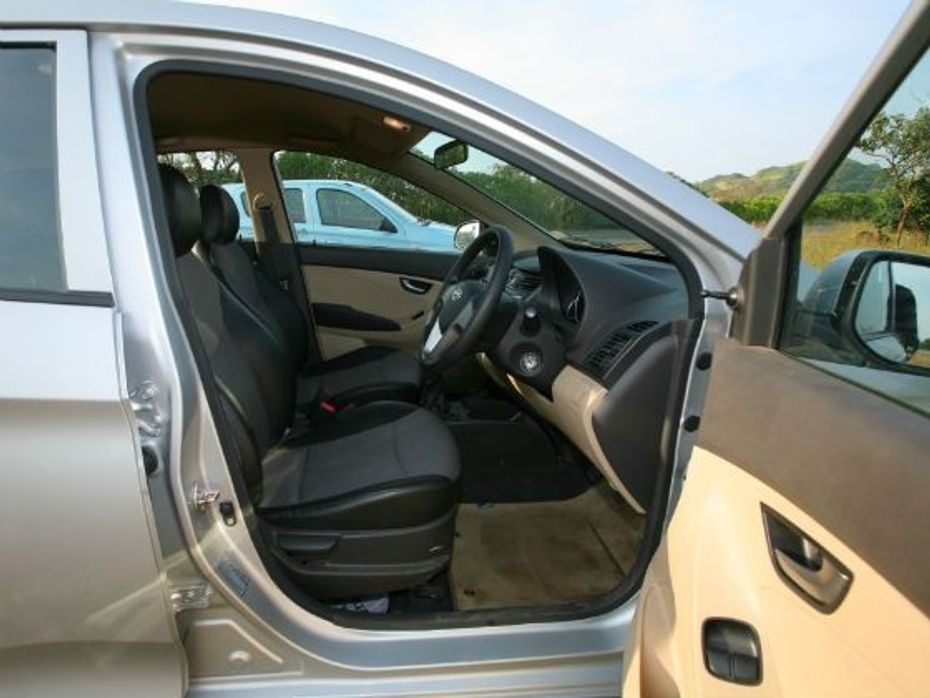
However, get into the Eon and one can notice that the boffins at Hyundai have definitely come up with better results. Carrying forward the exemplary justice done to the exterior design, Hyundai has ensured that the Eon’s interiors measure up. Having said that, small cars are a tough task for any manufacturer as their primary role is to keep costs down, and therefore materials used have to fit the bill. The Eon is a little plasticky on the inside, but the execution in terms of sculpting the plastic, its fit and finish and overall visual appeal end up taking market expectations up not just by a notch but to a whole new level.
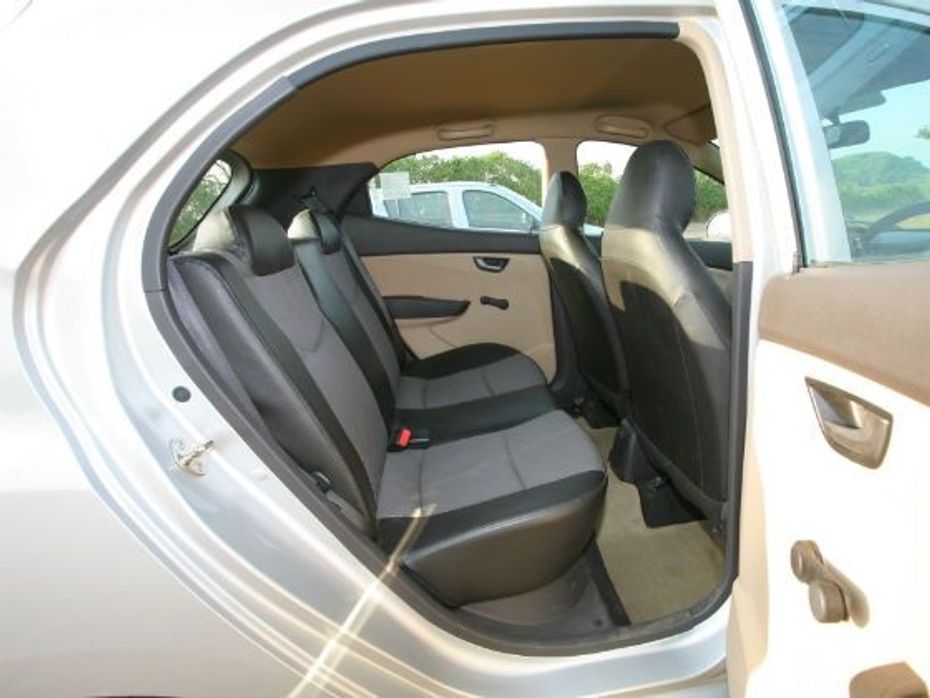
Space compared to the Alto is not much but squeezing 5 people in, whenever the need arises is definitely easier in the Eon. The very important boot space is also ably taken care of by the Eon with a decent 215 litres compared to the 177 litres in the Alto. There is not much to choose from when it comes to space between both these cars however, the Eon gets the better of the Alto in terms of interior design, boot space and that ‘oh so little’ bit of cabin space.
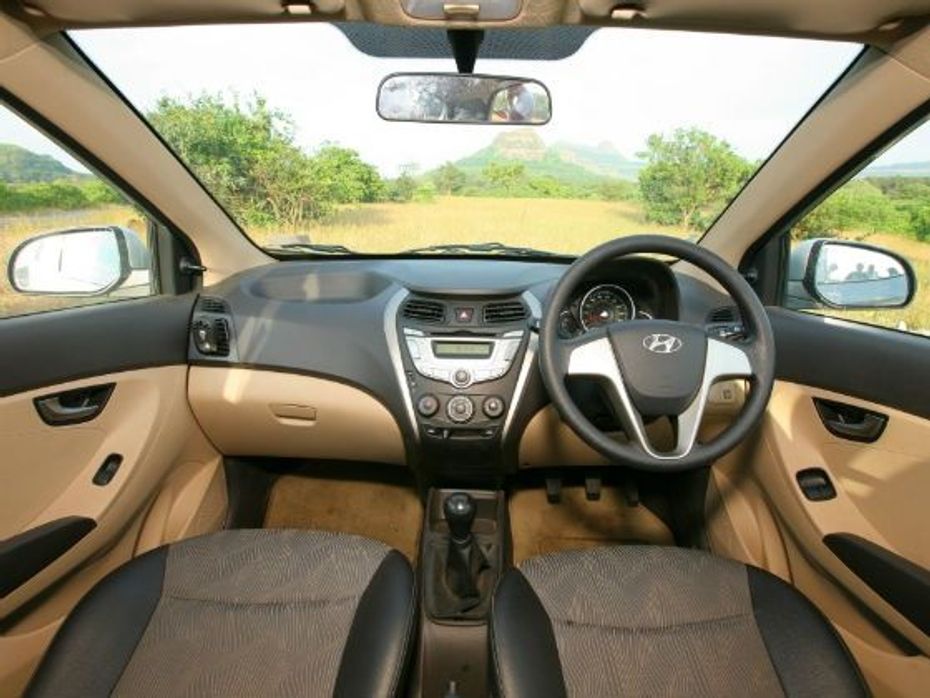
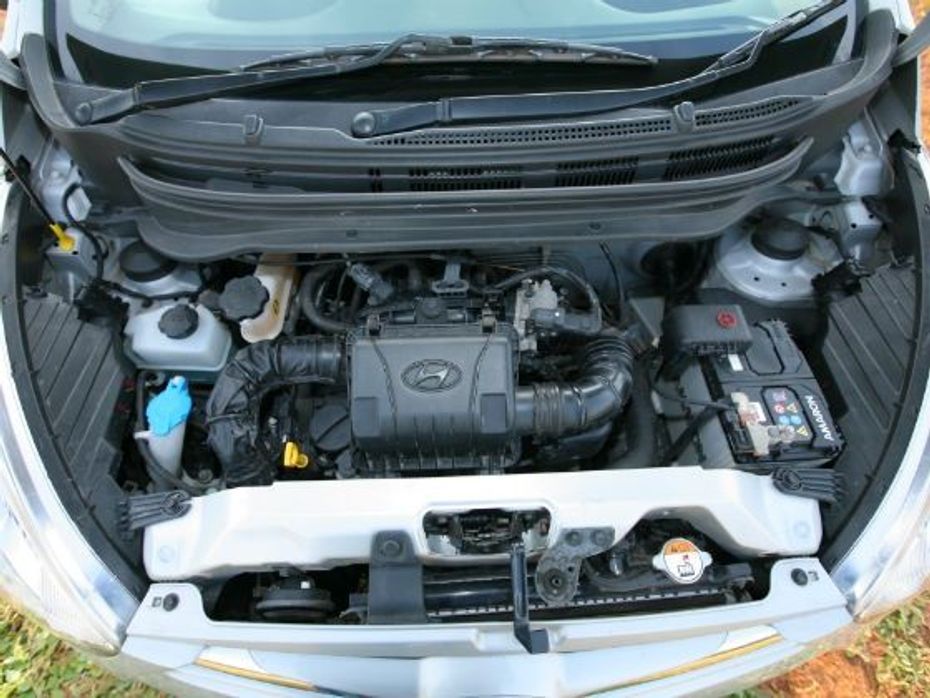
The magical 3-cylinder formula!
The original 800 started the 3-cylinder saga offering the right blend of city performance and amazing efficiency. And that saga continues till date, although the technology has grown by leaps and bounds as these two demonstrate.
Powering the Eon is an 814cc three-cylinder petrol engine that makes 56PS @5,500rpm and a decent torque of 74.56Nm @ 4,000rpm. Mated to a five-speed gearbox, the Eon is surprisingly agile and is well suited for city driving and those occasional highway jaunts. While the traditional 3 pot vibes are there, most of which are felt through the gear lever, it smoothens out once you’re on the move.
For the Alto, the product planners have stayed faithful with the same F8D engine as in the outgoing Alto but this has now been subjected to a major revision. The changes have resulted in the engine delivering big on torque and this is exactly what you crave for in not just this class of car but also the environs which it will be operating in. Torque has been bumped up by a massive 11 per cent, from 62Nm at 3000rpm in the previous Alto to 69Nm at 3500rpm, while max power developed by the revised motor is 49PS at 6000rpm. Compared to the Eon, refinement is simply outstanding. Not a hint of vibration which usually plague 3-pot motors. Maruti Suzuki have simply outdone themselves here.
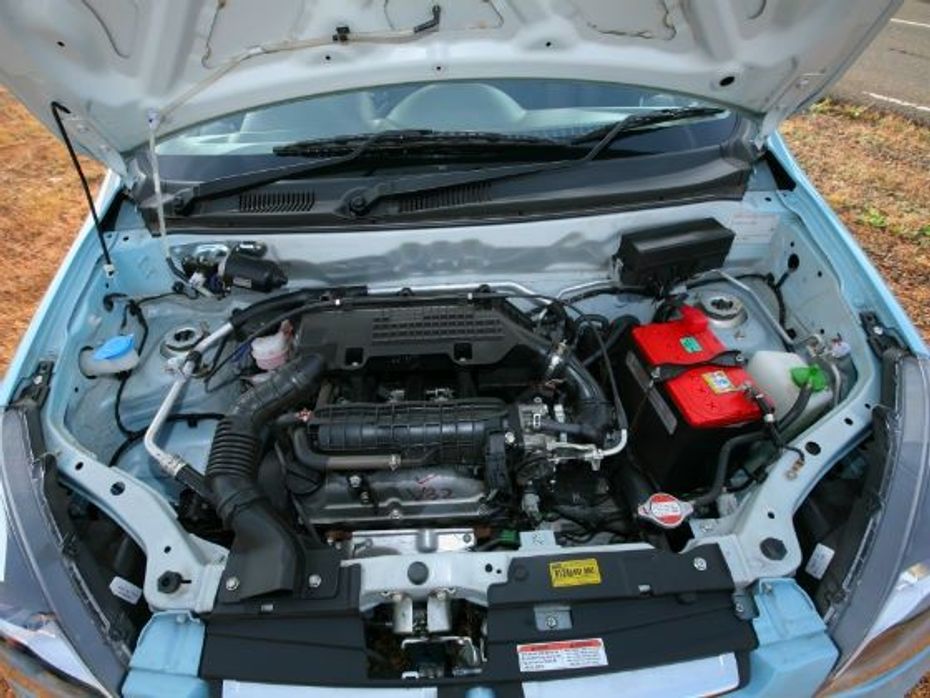
While the Alto might seem down on power compared to the Eon, it’s also about 20 kg lighter and makes its maximum torque earlier than the Hyundai. As a result, not only does the Alto pip the Eon to a 100 km/h by 2 seconds but is also significantly quicker in the roll on times. In gear acceleration in 4th gear took 18.3 seconds in the alto, while the Eon took all of 26. Performance with the aircon on is also much better in the Alto.
But where the Alto really decimates the Eon is in the ride quality. Even though the Jap rides on 12 inch Apollo’s compared to the 13 inch tyres on the Korean, the Alto possesses a ride quality which could test even bigger hatchbacks. The damping is just right for the conditions our country offers and the Alto simply pummels everything in its path. The Eon on the other hand does not like irregularities and bumps and potholes are dealt with a fair amount of bobbing and crashing. Rounded bumps pose no problem for the Eon but anything other than that upsets the little car quite a bit. On the mechanical front, the Alto is simply superior with better refinement, performance and ride and handling.
The ‘Kitna deti hai?’ answer!
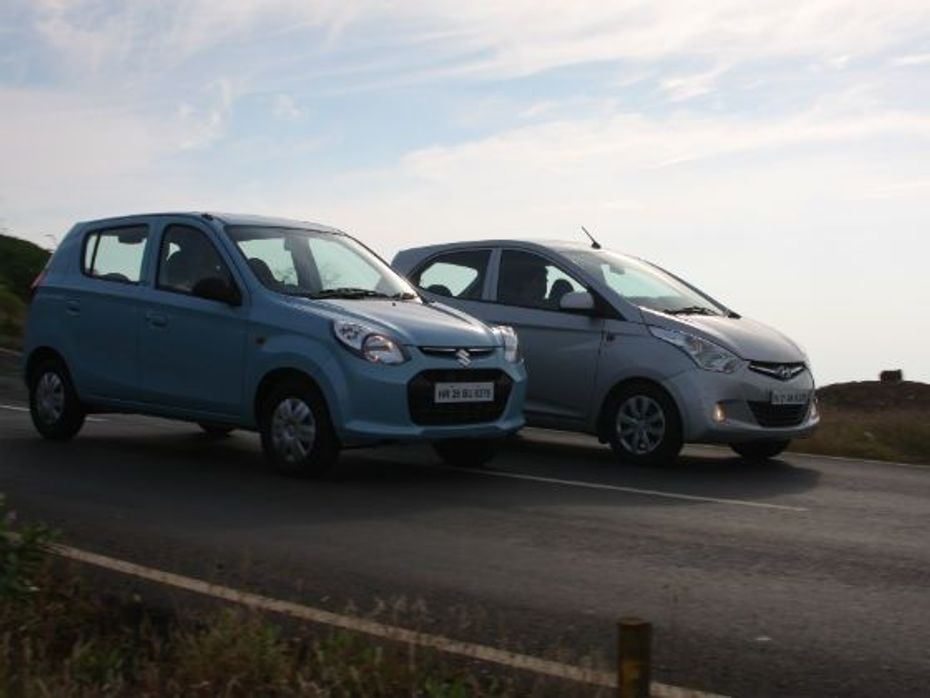
Again one of the major deciding factors when it comes to these cars is the mileage. Since these cars will see a majority of their lives traversing through the hustle and bustle of the city, it is in this environment where the figures count. The Eon managed 11 kmpl around town while the Alto did a slightly better 12.2 kmpl. With a 32 litre fuel tank, the Eon can keep trundling for 352 km before you will have to refuel while the 35 litre tank of the Alto will go slightly further at 427 km before you run dry. While the difference may not be much, the Alto is definitely more fuel efficient in the city.
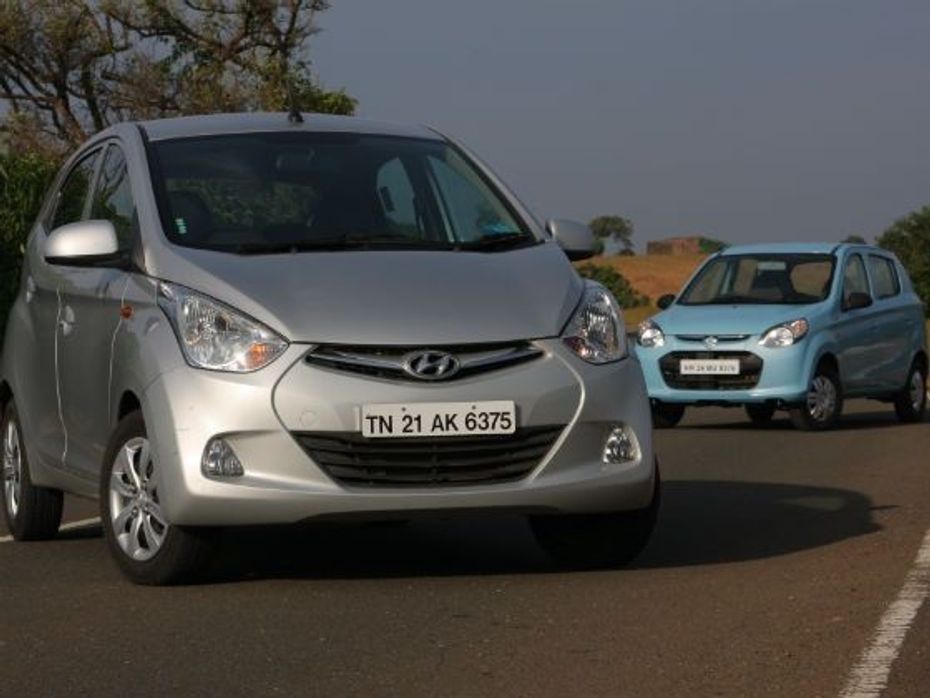
And the winner is...
Let’s just consider the top variants here which is the Alto 800 LXI with the airbag option is priced at Rs. 3.14 lakh while the Eon Sports is priced at Rs. 3.79 Lakh, both prices ex-showroom Delhi. Now the Eon might look expensive when you look at the prices but there is more than what meets the eye here. There is a vast difference between the two when it comes to equipment levels and Maruti has skimped on quite a bit. For example the Alto does not even come with left ORVM as standard, there is no central locking, heck the left door does not even sport a lock. The Eon has all that and a lot more making it much more value. While the Alto might be superior on the mechanical front, it’s the Hyundai which comes to the fore as better product overall. Yes it does lag behind the Alto in terms of performance and efficiency but then where it gains in terms of design, both inside and out, space, practicality and features more than makes up for the lost ground. The new Alto 800 has grown by leaps and bounds over the earlier car but Eon has the measure of it, not by much but its enough to keep its entry level crown intact.

Maruti Alto 800 vs Hyundai Eon: Shootout Photos!

#10YearChallenge: Wagon R, Innova, City And More, A Decade Apart

Maruti Suzuki Alto Breaches 3.5 Million Sales Figure

Maruti Suzuki Alto Remains The Car To Beat In Its Segment

Maruti Suzuki Launch Alto Special Editions In Association With MS...

Maruti Suzuki Alto 800 facelift launched at Rs 2.49 lakh

2016 Maruti Suzuki Alto Spotted Ahead of Launch

FY16: Top 10 best-selling cars of India

Maruti Alto sales to cross 30 lakh units in February 2016

Maruti Suzuki Alto800 and Alto K10 now comes with driver airbag
 Mahindra Scorpio N
Mahindra Scorpio N
 Royal Enfield Hunter 350
Royal Enfield Hunter 350
 Kia Syros
Kia Syros
 Royal Enfield Classic 350
Royal Enfield Classic 350
 Toyota Fortuner
Toyota Fortuner
India's largest automotive community
 Skoda Kylaq
Rs. 7.89 Lakh
Skoda Kylaq
Rs. 7.89 Lakh
 Mahindra XUV700
Rs. 13.99 Lakh
Mahindra XUV700
Rs. 13.99 Lakh
 Maruti FRONX
Rs. 7.51 Lakh
Maruti FRONX
Rs. 7.51 Lakh
 Maruti Brezza
Rs. 8.34 Lakh
Maruti Brezza
Rs. 8.34 Lakh
 Mahindra Scorpio
Rs. 13.61 Lakh
Mahindra Scorpio
Rs. 13.61 Lakh